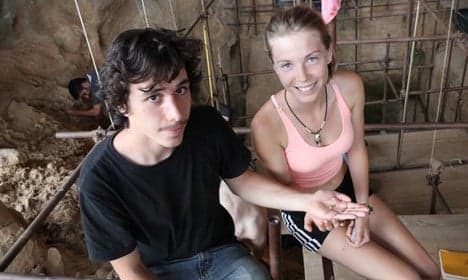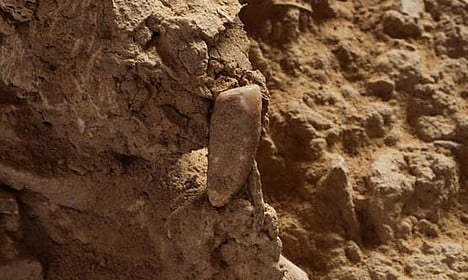Students find 560,000-year-old tooth in France

Archaeology students have unearthed what is understood to be the oldest human body part ever found in France - a tooth from 560,000 years ago. Researchers have hailed it as a "major discovery".
The tooth was found by students who were working voluntarily in the Arago Cave in Tautavel, in the Pyrénées-Orientales département in southern France.
The site is already famous in archaeological circles as it was there that the Tautavel Man was discovered, a 450,000-year-old Homo Erectus.
The tooth predates the Tautavel Man by 100,000 years.
L'Homme de #Tautavel prend un coup de jeune : une dent de 560 000 ans av JC découverte ! http://t.co/YywIZMTX8R pic.twitter.com/7ZAXdeju94
— FranceBleuRoussillon (@bleuroussillon) July 27, 2015
Christian Perrenoud, a geo-archaeologist working on the site, said that while the tooth was a "great find", there's a lot more left to uncover.
"We are pretty confident that the site has a lot more to reveal," he told The Local.
He said it was unlikely to find the entire skeleton of the tooth's owner - they didn't do burials in those days - but that the team was hoping to find other bones.
"Human remains from between 500,000 and 800,000 years ago are more than scarce in Europe nowadays, and this tooth fills a bit of the gap of the incompleteness in this 300,000-year period," he said.

(Photo: Denis Dainat/Musée de Tautavel)
He added that the team has found thousands of objects since excavation first began on the 560,000-year-old layer in May.
The team has found in recent months plenty of information about the people living in the cave at the time, including the pollen content of the area, the vegetation, and even how far the people travelled to get their flint (about 30 kilometres).
The tooth was found by volunteer Camille, 16, on Thursday last week as she was working with another young archaeologist.
The bone has been called Arago 149, is understood to be an adult incisor, but it's unclear as to whether it belonged to a man or woman.
Découverte à Tautavel. Une dent repousse de 100.000 ans, à 550.000 ans, le plus vieux reste humain trouvé en France pic.twitter.com/L7HBGTOlKp
— Musée de Tautavel (@MuseedeTautavel) July 27, 2015
Even though the tooth is said to be "very worn", researchers hope that they can use it to learn more about the morphology of the first Europeans.
The cave has been a goldfield for archaeologists over the past 50 years. They have dug up over 600,000 objects of interest.
In 2011, researchers at the cave discovered a baby tooth, suggesting Homo heidelbergensis, probably the ancestor of Homo sapiens in Africa and the Neanderthals in Europe, led a family life in the cave.
Comments
See Also
The tooth was found by students who were working voluntarily in the Arago Cave in Tautavel, in the Pyrénées-Orientales département in southern France.
The site is already famous in archaeological circles as it was there that the Tautavel Man was discovered, a 450,000-year-old Homo Erectus.
The tooth predates the Tautavel Man by 100,000 years.
L'Homme de #Tautavel prend un coup de jeune : une dent de 560 000 ans av JC découverte ! http://t.co/YywIZMTX8R pic.twitter.com/7ZAXdeju94
— FranceBleuRoussillon (@bleuroussillon) July 27, 2015

(Photo: Denis Dainat/Musée de Tautavel)
The tooth was found by volunteer Camille, 16, on Thursday last week as she was working with another young archaeologist.
Découverte à Tautavel. Une dent repousse de 100.000 ans, à 550.000 ans, le plus vieux reste humain trouvé en France pic.twitter.com/L7HBGTOlKp
— Musée de Tautavel (@MuseedeTautavel) July 27, 2015
Join the conversation in our comments section below. Share your own views and experience and if you have a question or suggestion for our journalists then email us at [email protected].
Please keep comments civil, constructive and on topic – and make sure to read our terms of use before getting involved.
Please log in here to leave a comment.